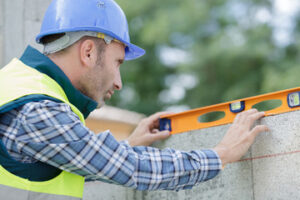House Leveling is a complex procedure that requires the services of a foundation repair professional. Although all foundations settle in the same general direction, differential settlement can result in serious structural damage. House leveling services are usually performed by experienced foundation repair professionals. They will be able to assess the condition of your home’s foundation, as well as provide you with an estimate for the repair.

Pier and beam leveling for house is the process of restoring the foundation of a house. While the entire process is quite simple, it is possible for foundation problems to affect various areas of a house. For example, a slanting floor or gaps in the flooring are signs that the foundation may be affecting the structure of a house. The good news is that pier and beam leveling for house repairs are typically less expensive than other foundation repair methods. Furthermore, these methods are easier to access.
Once you have determined the leveling requirements for your pier and beam foundation, you can use special equipment to level the girders. A hydraulic jack is used to raise and level the girders that support your house. You should carefully connect the hydraulic jack to the pier columns so that the jack is placed at the midpoint of the girder beam. To ensure the jack’s correct placement, be sure to attach a string line between the girder and the pier.
Choosing the best wood piers for your foundation is an important step in maintaining your house’s stability. If your piers are made of wood, be sure to choose a type that will resist decay due to moisture. Cedar is an excellent choice because it naturally resists moisture and does not rot. My 100-year-old home used cedar posts to support the structure and had to have them replaced recently. This is an especially important consideration if you live on a property that has poor drainage.
Another way to prevent foundation movement is by re-shimming. Re-shimming involves making small adjustments to specific areas of your pier and beam foundation. This will prevent bigger problems from developing. Another effective foundation repair method is underpinning. If your foundation isn’t level, a professional will jack it up to the correct elevation.
Underpinning is an important part of house leveling. The process involves attaching steel or timber piers to the foundation. These piers are used to transfer the building’s load to the soil underneath. This prevents settlement and provides additional support to the foundation. The process also ensures the value of the house remains intact.
While the process can be a DIY project, it is best to hire professionals when your home is experiencing foundational issues. While there are certain signs of subsidence that you can spot yourself, professional underpinning is always the safest way to ensure your home is level. Subsidence is a common problem that occurs on many properties. However, it is a permanent solution and you will no longer have to worry about it occurring again.
Underpinning is a solution for many foundation problems. Underpinning will raise the foundation, which will restore the home to its original position. When you do not perform this process, you may face many problems. For example, a sinkhole can form in your foundation, putting your entire property at risk.
Before underpinning, your structural engineer will check the area to make sure the underpinning will be effective. An engineer will be able to identify any issues with the foundation, such as footing movement, slab heave, or settlement. He or she can also recommend independent soil tests.
Underpinning can be a challenging process, but it isn’t technically difficult. An experienced underpinning contractor will know how to manage the most challenging site conditions and follow safe house jacking procedures. You should also consult a structural engineer before adding any concrete to the site. The underpinning contractor will inject resin into the soil, which expands and hardens.
